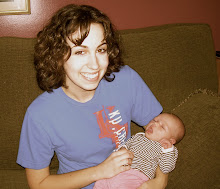I will now define some terms for Typography. These may look like weird words that are incorrect, but I assure you, they are all correct; I have double checked them.
Relative Measurement- Relationships between character spacing are linked together with type size in relationships through relative measurement.
Point- the unit of measurement used to measure the type size of a font.
Pica- a unit of measurement equal to 12 points that is commonly used for measuring lines of type.
Em (and em dash)- relative measurement that has no prescribed, absolute size. It is relative to the type being set. Used to define basic functions and is linked to the size of type. Both ems and ens are used in punctuation to provide a measurement for dashes.
En (and en dash)- relative measurement that has no prescribed, absolute size. It is relative to the type being set. Unit of relative measurement equal to half of one em.
Legibility- involves a range of factors, perspectives, and methodologies. A body of knowledge, research, and opinion to which designers refer selectively.
Rag- Occur when highly noticeable shapes form by the line ends of text blocks that distract from simple, uninterrupted reading.
Type Alignments:
flush left- arrangement of type that is informal and its asymmetry may be used as a positive element in the design of a page.
centered- type set of a central axis, with even word spacing and ragged left and right margins.
justified- Uses three values for type setting: minimum, maximum, and optimum values.
Word Spacing (ideal)- centered justification.
Rivers- typically occur in justified text blocks when the separation of the words leaves gaps of white space in several lines.
Indent- provides readers with an easily accessible entry point to a paragraph.
Leading- another example of relative measurement. Most desktop programs assign an automatic percentage value to leading. Used to specify the depth of space between lines.
Kerning- The design of text faces incorporates inbuilt automatic adjustments to the spacing of particular letter pairs that would otherwise create disproportionate spaces.
Tracking- Adjusting the overall space between letters, rather than the space between two characters.
Weight- typefaces include choice of weights, from the single bold variant common to most text faces to intermediate weights.
Scale- increasing in point size of type.
Typographic Variation-
Orphan- The final one or two lines of a paragraph separated from the main paragraph to form a new column.
Widow- a lone word at the end of a paragraph made by justification.

No comments:
Post a Comment